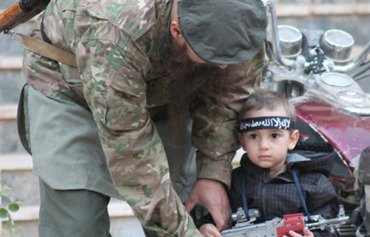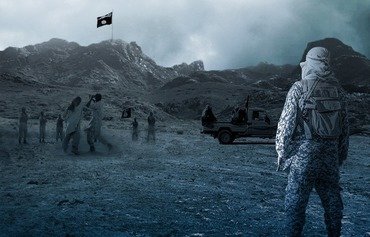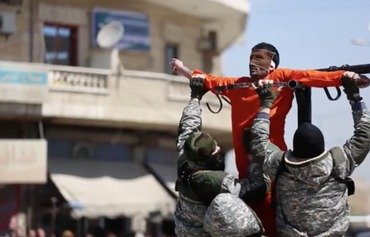Counter-terrorism campaigns must work hard to shine a light on the lies propagated by the "Islamic State of Iraq and the Levant" (ISIL) media machine and to sever its sources of funding, media experts tell Diyaruna.
This is because the image ISIL presents of itself is a major source of its power, they said, making it appear stronger and more cohesive than it is in real life and thereby contributing to its efforts to recruit young people.
Degrading the capabilities of the ISIL media machine is therefore an integral part of the war on the group, they added.
In a November report in al-Hayat newspaper, Iraqi authorities described the arrest and confession of an ISIL media operative known as Abu Saleh who worked for Amaq agency, the group’s media arm.
Saleh revealed that ISIL uses Amaq to exaggerate its successes, featuring what it describes as major operations to cover up the heavy losses it is suffering.
ISIL’s media machine represents half its power, said Mazen Zaki, director of the new media department at Egypt's Ibn al-Waleed Studies and Field Research Centre.
The group relies heavily on "media promotion to lure and recruit fighters and promote its fatwas, views and operations", he told Diyaruna, and uses content that is altered, exaggerated and falsified to suit its own ends.
Given the great importance ISIL places on its media and media operatives, he said, it would help if the international coalition could learn more about senior media operatives and their hierarchy so it can zero in on them.
A number of senior media operatives have been killed in direct airstrikes in Syria and Iraq, he said, including Ziad Kharoufeh, ISIL’s "Information Minister" in Ninawa and ISIL spokesman Abu Mohammed al-Adnani, who was killed in Syria.
Kharoufeh "was known for the prolific amount of misinformation he published on a regular basis to motivate the group’s elements and spur them to continue fighting and not flee", Zaki said.
Counter-terrorism media campaigns must focus on revealing ISIL's falsifications truthfully, accurately and in a way that appeals to ordinary citizens in order to expose the group’s manipulation of public opinion, he added.
Media machine needs money to run
The group relies primarily on money to ensure the success of its media machine, Cairo University media professor Hassan Afifi told Diyaruna.
"Elimination of its sources of funding would help degrade its media in general, and thus its ability to fabricate, exaggerate and disseminate news," he said.
Recent media reports also indicate ISIL has reduced the salaries of its media operatives to about $400, which is not enough to entice people to work for the group, he added.
The fight to eliminate ISIL includes monitoring and tracking all those who follow the group, visit its websites and interact with it online, Afifi said.
This type of monitoring has led to several arrests in European and Arab countries, he said, noting that continued surveillance will weaken the group’s media effort, which relies primarily on hundreds of volunteers.
Operating in countries around the world, these unpaid volunteers re-post ISIL's statements and videos online and share them via social media, he said.
"It is very important that efforts be made to take out the people running ISIL’s media machine because of the lies and misrepresentations of sharia it disseminates," said Sheikh Rajeh Sabri of Egypt's Ministry of Religious Endowments.
It is important that these distorted ideas do not reach the group’s supporters and recruits and the world at large, he said.
The group seeks, through the videos and content it posts, to highlight activities that would "entice the youth, by way of exaggerating its military operations" and the numbers of its fighters.
Most fighters featured in ISIL's propaganda videos and magazines appear to be in good physical condition, he noted, and are pictured wearing uniforms and using modern military equipment.
This is deliberately designed to give the impression that the group is well equipped and unified, "which is not the case in real life", he said.

!['Islamic State of Iraq and the Levant' Anbar leader Shaker Wahib was killed in a May 2016 airstrike. He was featured in execution videos produced by the group. [Photo courtesy of Mohammed al-Abdullah]](/cnmi_di/images/2017/02/02/7132-Iraq-ISIL-leader-600_384.jpg)






